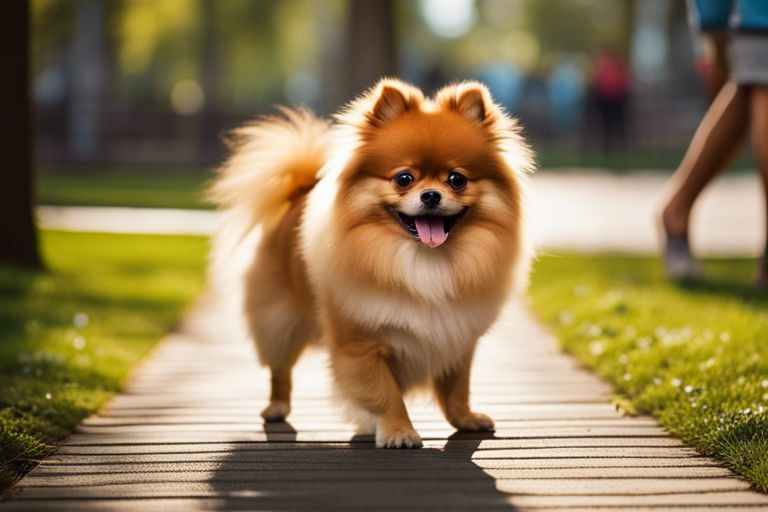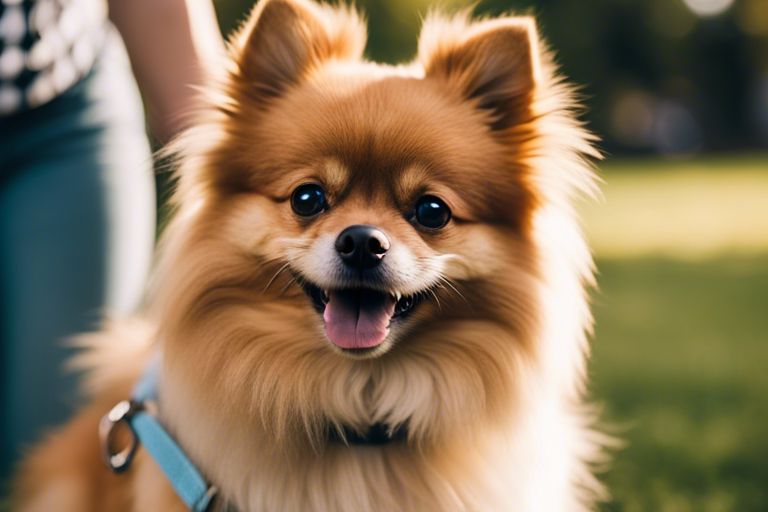Training your Pomeranian can seem like a daunting task, but with the right techniques and guidance, it can be a rewarding experience for both you and your furry friend. In this comprehensive guide, we will take you through a step-by-step process to help you master obedience and behavior training for your Pomeranian. By following these proven methods and tips, you’ll be well on your way to having a well-behaved and well-adjusted Pomeranian companion. Let’s get started!
Key Takeaways:
- Consistency is Key: Establishing and maintaining a consistent training routine is imperative for Pomeranian obedience and behavior.
- Positive Reinforcement: Utilizing positive reinforcement techniques such as rewards and praise can greatly facilitate the training process with Pomeranians.
- Patience and Understanding: Being patient and understanding of your Pomeranian’s individual personality and needs is crucial for successful training outcomes.
Preparing for Pomeranian Training
Essential Training Supplies
The key to successful Pomeranian training lies in having the right tools. These include a sturdy leash, a comfortable harness, a variety of tasty treats, interactive toys, and a clicker for positive reinforcement. Investing in quality supplies will make the training process smoother and more effective.
Setting Up a Training Space
Pomeranian training requires a dedicated space free from distractions where your furry friend can focus solely on learning. Clear out a quiet area in your home with enough room for your Pomeranian to move around comfortably. Make sure the space is well-lit and ventilated to keep your pup engaged and motivated during training sessions.
Setting up a designated training area helps create a routine and signals to your Pomeranian that it’s time to focus and learn. This space should be a positive environment where your pup feels safe and eager to participate in training exercises.
Basic Obedience Training
Step-by-Step Commands: Sit, Stay, Come
Step-by-Step Commands are crucial in laying the foundation for obedience training in your Pomeranian. Consistency is key when teaching commands like Sit, Stay, and Come. Breaking down each step helps your Pomeranian understand what is expected of them.
| Command | Description |
| Sit | Use a treat to lure your Pomeranian into a sitting position. Say the command “Sit” as you guide them into the sit position. Reward them with a treat and praise. |
| Stay | Start with the Sit command. Once your Pomeranian is sitting, take a step back and hold your hand up in a “stop” gesture. Say “Stay” in a firm but calm voice. Reward them if they stay in place. |
| Come | Call your Pomeranian’s name followed by the command “Come” in an inviting tone. When they come to you, reward them with a treat and praise. |
Positive Reinforcement Techniques
There’s no denying the power of positive reinforcement when training your Pomeranian. Using treats, praise, and other rewards can motivate your furry friend to learn and obey commands. Consistency and patience are imperative in reinforcing good behavior and creating a strong bond with your Pomeranian.
Plus, positive reinforcement techniques help build trust and confidence in your Pomeranian, making training sessions more enjoyable for both of you. Remember to always reward good behavior promptly and ignore or redirect unwanted behavior without resorting to punishment.
Addressing Behavior Issues
Common Pomeranian Behavior Problems
Unlike larger breeds, Pomeranians are known to exhibit specific behavior issues that are common within their breed. Issues such as excessive barking, separation anxiety, and possessiveness are often seen in Pomeranians. These behaviors can be challenging to address but with the right training and consistency, they can be effectively managed.
Tips for Correcting and Preventing Issues
While addressing behavior problems in Pomeranians, it is imperative to use positive reinforcement techniques. Rewarding good behavior with treats and praise can help in correcting unwanted behaviors. Additionally, regular exercise and mental stimulation are crucial for preventing behavioral issues in Pomeranians.
- If your Pomeranian displays aggressive behavior, seek the help of a professional dog trainer.
- The earlier you address behavior issues, the easier it will be to correct them.
For instance, if your Pomeranian is displaying possessive behavior over toys or food, you can work on training them to drop the item on command and rewarding them for doing so. Consistency is key in ensuring that the behavior is corrected over time.

Advanced Training Techniques
Despite mastering the basics of Pomeranian training, there are advanced techniques that can take your pup’s obedience and behavior to the next level.
- Tricks and Agility Training
Trick Training Agility Training Teach fun tricks like roll over and play dead. Set up obstacle courses to improve agility and coordination. - Socialization and Behavior Shaping
Socialization Behavior Shaping Expose your Pomeranian to different people and animals. Use positive reinforcement to encourage desired behaviors.
Tricks and Agility Training
Some Pomeranians thrive on learning new tricks and engaging in agility training. These activities not only keep them mentally stimulated but also improve their physical dexterity and coordination.
Socialization and Behavior Shaping
To ensure your Pomeranian is well-adjusted and friendly, socialization plays a crucial role. Exposing your pup to various environments, people, and animals from a young age helps prevent fear and aggression. In addition, behavior shaping through positive reinforcement techniques helps reinforce good manners and obedience.
Agility training is another advanced technique that can benefit Pomeranians. Not only does it provide physical exercise, but it also enhances their problem-solving skills and boosts confidence. Setting up an agility course with obstacles like tunnels, jumps, and ramps can challenge your Pomeranian’s abilities in a fun and rewarding way.
Factors That Affect Training Progress
Now, when it comes to mastering Pomeranian training, there are several factors that can affect the progress you make with your furry friend. Understanding these factors is crucial to achieving the desired obedience and behavior outcomes. Knowing how age, health, environment, and social interactions play a role in training will help you tailor your approach to meet your Pomeranian’s specific needs.
Age and Health Considerations
Factors: Age and health are significant considerations when training your Pomeranian. Younger puppies may have shorter attention spans and may tire easily during training sessions. Older dogs may have physical limitations that affect their ability to learn new commands. It’s necessary to take these factors into account when planning your training sessions.
Environmental and Social Influences
Factors: For optimal training progress, consider the environmental and social influences on your Pomeranian. Creating a calm and distraction-free training environment can help your dog focus better. Additionally, social interactions with other pets and people can impact your Pomeranian’s behavior. Training in different environments can also help generalize commands.
Another consideration is the socialization of your Pomeranian. Exposing your dog to various people, animals, and environments from a young age can help prevent behavioral issues later on. Socialization is an ongoing process that should be incorporated into your training routine to ensure a well-rounded and well-behaved Pomeranian.
Pros and Cons of Training Approaches
| Traditional Training | Modern Training |
| Pro: Established methods with historical success | Pro: Utilizes the latest behavioral science research |
| Con: Relies on punishment-based techniques | Con: May require more time and patience |
| Pro: Can be effective for certain dogs and behaviors | Pro: Focuses on positive reinforcement for desired behaviors |
| Con: Can lead to fear or aggression in some dogs | Con: May not work for all dogs, especially those with specific needs |
Traditional vs. Modern Training Methods
You must consider the pros and cons of traditional versus modern training methods when deciding on an approach for your Pomeranian. While traditional methods may have a historical foundation, modern techniques rooted in positive reinforcement can be gentler and more effective in the long run. Be mindful of, every dog is different, so be open to experimenting and finding what works best for your furry companion.
Understanding the Balance of Discipline and Reward
To effectively train your Pomeranian, you must find the right balance between discipline and reward. Discipline should be firm but not harsh, while rewards should be frequent and tailored to your dog’s preferences. Consistency is key in reinforcing good behavior and correcting unwanted habits. Remember that training should be a positive experience for both you and your Pomeranian, so be patient and celebrate small victories along the way.
With the right approach and understanding, you can master Pomeranian training and build a strong bond based on trust and respect. Stay committed to your training routine, stay patient, and always keep your Pomeranian’s well-being in mind. By following these guidelines, you can ensure a happy and well-behaved furry companion for years to come.
Summing up
To wrap up, “Mastering Pomeranian Training – A Step-by-Step Guide To Obedience And Behavior” provides a comprehensive and detailed approach to training these lovable but sometimes stubborn dogs. By following the step-by-step guide and tips provided in this book, readers can effectively teach their Pomeranians obedience and good behavior. The emphasis on positive reinforcement and understanding the breed’s unique characteristics sets this guide apart and makes it a valuable resource for any Pomeranian owner looking to improve their pet’s training. With patience, consistency, and the right techniques, mastering Pomeranian training is achievable for any dedicated owner.
FAQ
Q: What is the importance of training a Pomeranian?
A: Training a Pomeranian is important to ensure obedience and good behavior. It helps establish a strong bond between the owner and the dog, promotes mental stimulation, and prevents behavioral issues.
Q: How often should I train my Pomeranian?
A: Consistency is key when training a Pomeranian. It is recommended to train your Pomeranian for short periods of time multiple times a day. This helps reinforce learning and prevents the dog from getting bored or overwhelmed.
Q: What are some common training techniques for Pomeranians?
A: Positive reinforcement, such as using treats or praise, is highly effective when training Pomeranians. Additionally, using clicker training, setting clear boundaries, and being patient and persistent are all important techniques to successfully train a Pomeranian.

